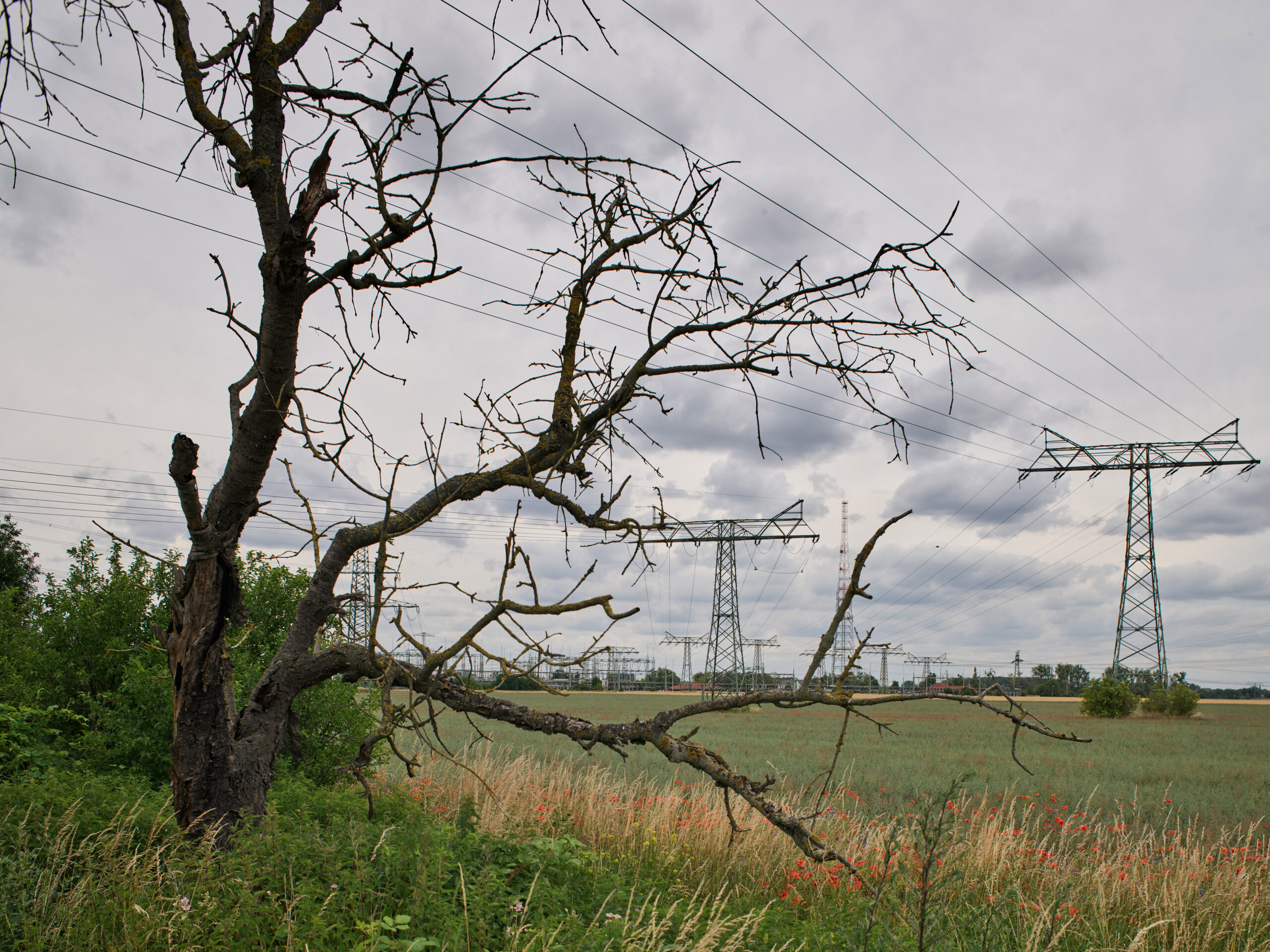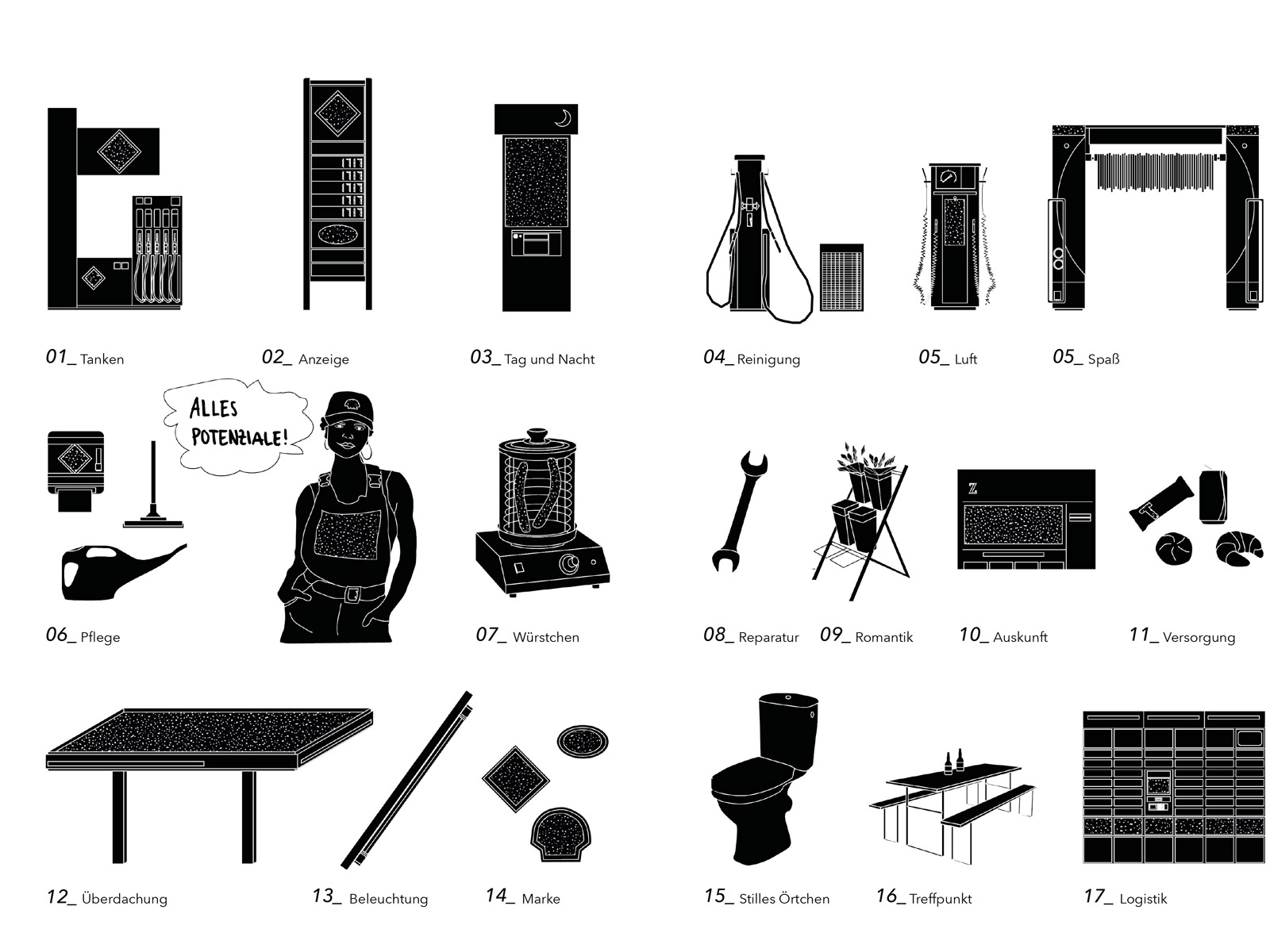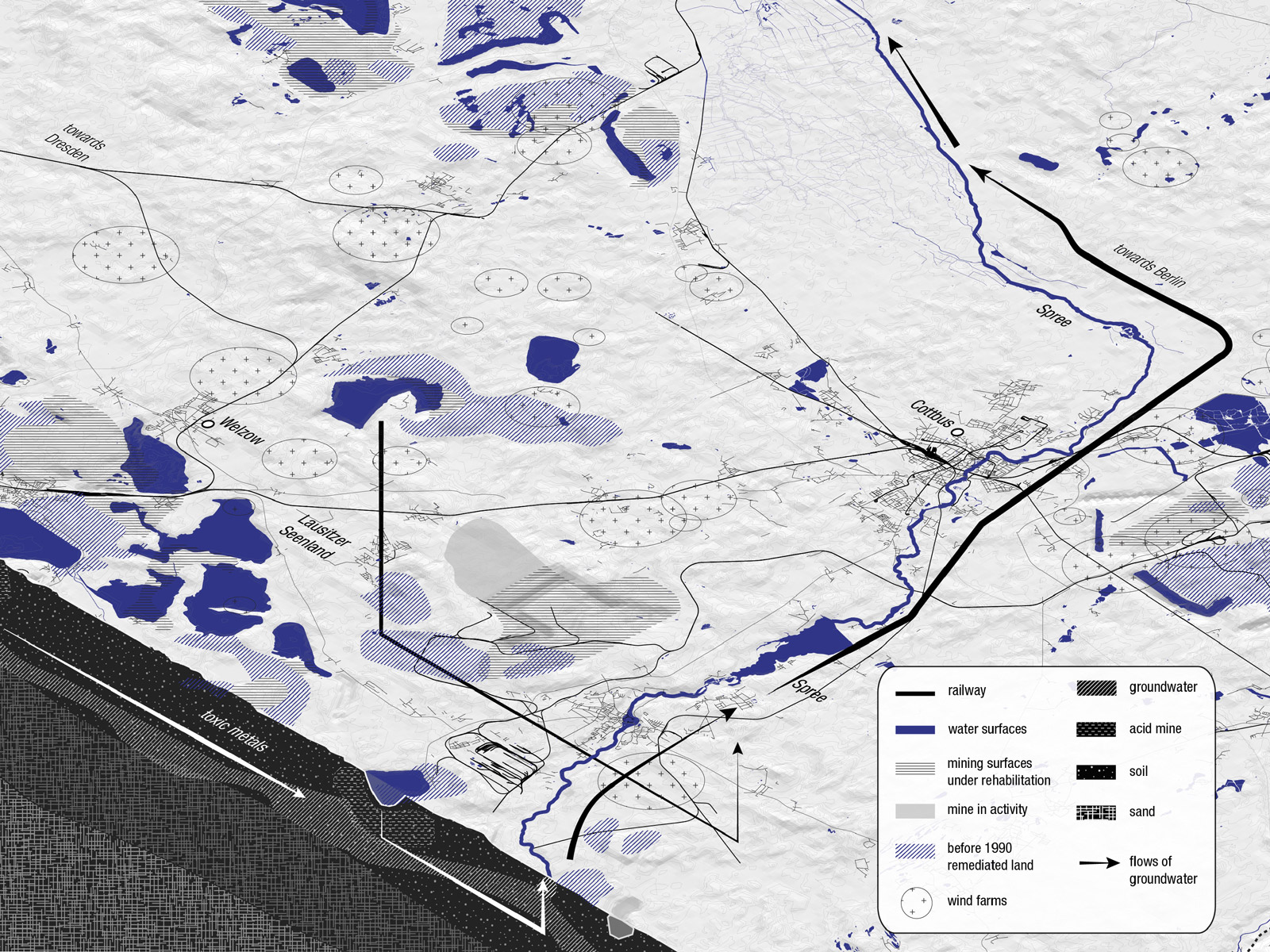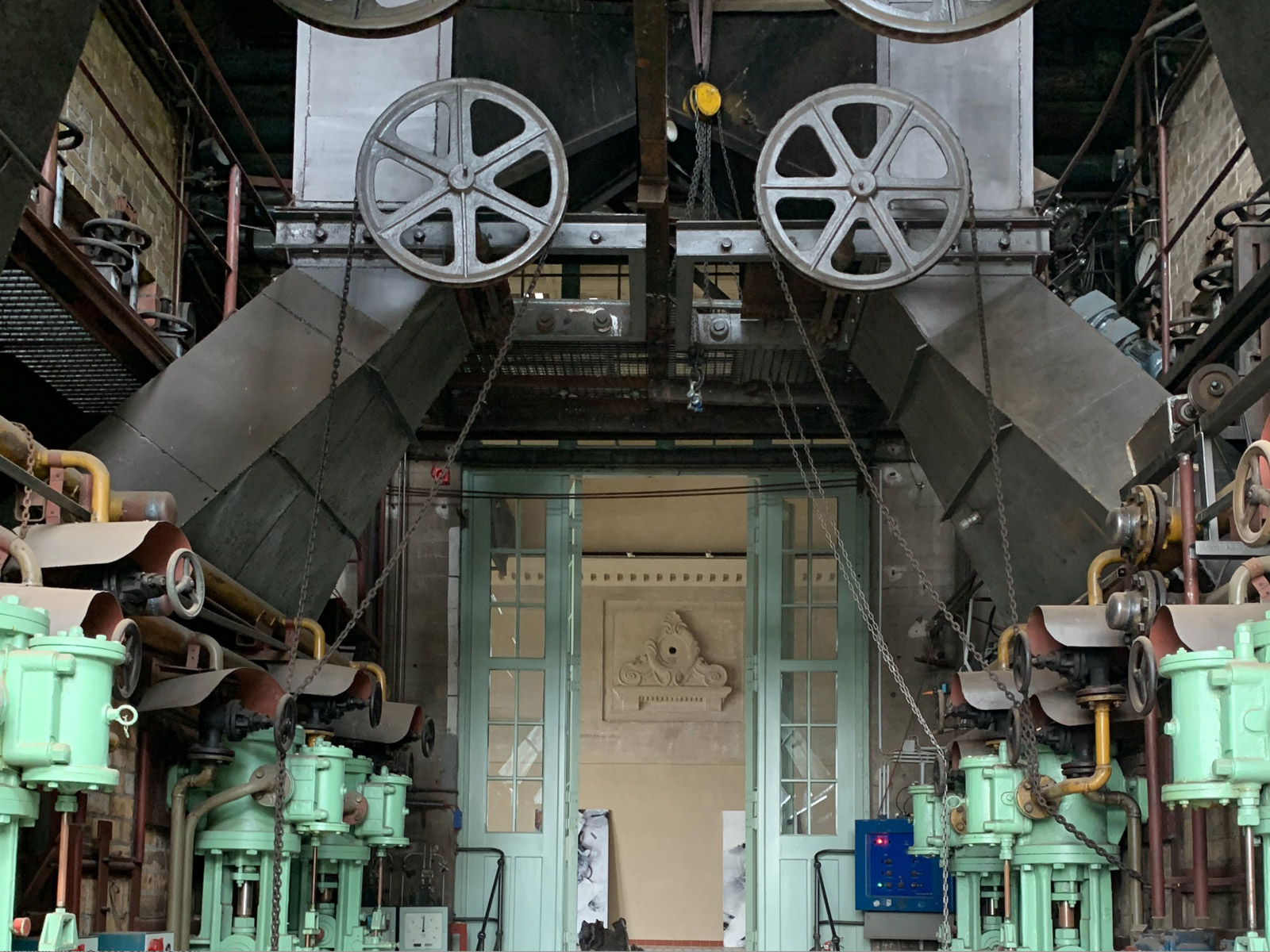INFRASTRUCTURE! Thesis
The Future Is Electric!
By: BB2040 Editorial Team
With contributions from: Tanke, Christina Krampokuki, Uroš Stojadinović, BB2040 Editorial Team
Published on June 26, 2021

As Germany transitions towards a carbon-neutral energy future, its producing and transmitting energy infrastructures will become an even more visible and mundane part of our daily landscapes. Until 2040 we will be witnessing the synchronicity of the different systems side-by-side: Infrastructural systems based on fossil fuel combustion will need to change, be retrofitted or adapted in use and operation; while new technologies and devices for generating, transmitting and storing energy will have to find space, public acceptance and financial backing for their implementation. In a decentralised energy grid of prosumers, smaller communities and municipalities will have to become major suppliers for urban agglomerations.
The BB2040 Editorial team is formed by Philipp Misselwitz, David Bauer, Kriti Garg, Rosa Pintos Hanhausen, Simon Warne & Johanna Westermann.
This INFRASTRUCTURE! Thesis is presented at the Wissenstadt Ausstellung 2021.
The World Ahead
To limit global warming to below 1.5 degrees Celsius[1] compared to pre-industrial levels, worldwide CO2 emissions will need to be halved by the end of the year 2030 - before dropping to zero over the two decades thereafter. Mitigating CO2 emissions on this scale will require a switch to less energy intensive lifestyles as well as electrification on a massive scale. Electricity itself is likely to be the main infrastructure, animating an increasingly digitised and automated world and industry, heating our houses and powering cars, buses, bikes and trains. Why electrify?[2] Electric energy—as one unified “currency”—will allow the coupling of all energy consuming sectors[3] and the efficient distribution and transfer of energy surplus and shortages throughout.
The challenge: from much to much more. This all-encompassing rewiring of our daily activities will need to be based on a complete shift of energy sources. Over the past 150 years, our urbanising civilisation has become addicted to fossil fuels[4]. Disentangling from fossils is likely to be conflictual and require compromises to existing lifestyles as well as a readiness to reconfigure landscapes and urban areas. The recently released 2 Trillion-Dollar (USD$2,000,000,000,000!!!!) Biden Plan to invest in a “Modern, Sustainable Infrastructure and an Equitable Clean Energy Future''[5] gives us an example of the scale of the effort that will need to be mobilised.
Germany's planned nuclear phase-out in 2022[6] and agreed coal and lignite-phaseout in 2038[7] are pushing the gradual transition to renewable energy (wind, and solar, hydro, tidal, bioenergy) as the sole source for electricity to 2040 and beyond. Infrastructural systems facilitating the distribution and combustion of fossil fuels—lignite, hard coal, oil, gas—will need to be shut off, replaced or retrofitted and adapted (e.g. CCS technologies [8]) while massive investment into the set-up of green energy infrastructures is required at the same time.
Decentralization, Disruption, Distribution
The transformation towards renewables will lead to major land use changes in the region. The end of subsurface extraction of ancient (hard coal, oil, gas) or even primordial (uranium[9]) energy storages will make the designation of large land surfaces to interact with the atmosphere necessary. Energy carrier extraction will move from below to above ground, field-like, only harvesting wind, biofuels and solar energy. Whether as centralized, decentralized[10], clustered in giant parks or at the scale of individual households, energy infrastructures will require unprecedented political and societal resolve and the readiness to adapt.
As renewables are intermittent, energy stores will be key. All available storage options - cars, toothbrushes, clothes etc. will need to be used. Along this path our daily schedules will be dictated by the availability of energy as well as new efficient storage and distribution technologies (green hydrogen, solid state battery systems etc.). Sustaining our economy on partially very volatile energy carriers requires massive interventions, strong financial backing and public acceptance for their implementation. In order to ensure grid stability on a national scale even throughout windless and sunless days, an efficient exchange and transmission of electricity between sectors[11] and between countries is essential[12]. Vast transmission corridors are likely to be required connecting the more sunny parts of southern Europe or Scandinavian water turbines to the metropolitan centres of the continent. A newly emerging energy landscapes of a productive countryside is likely to emerge with drastic physical and spatial impacts.
Post-Carbon Democracy: Power to the People
Parting from the current energy provision and distribution network will be challenging and disruptive. But the joint collective effort required for the reconfiguration can create opportunities for a new sharing culture. Decentralization and shortening of energy supply chains could dynamise (re)communalization efforts, or the setting up of local cooperatives managing local energy commons, generating much needed local income and jobs. Whether a web of independent, small-scale prosumers could compete with large, monopolized utility providers remains unclear and will certainly require political and financial support. The difficult decisions that have to be made around the infrastructural development of Europe’s “Clean Energy Grid” are not only important for smaller communities but will decide if a broad societal momentum for change can be created. Space itself is likely to become the major precondition for energy production in 2040. Urban and territorial planning will be the medium orchestrating demands and spatial resources.
Further Links:
Energy-Atlas Berlin: https://energieatlas.berlin.de/
[1] https://www.ipcc.ch/sr15/
[2] https://www.rewiringamerica.org/handbook
[3] https://www.cleanenergywire.org/factsheets/sector-coupling-shaping-integrated-renewable-power-system
[4] https://ourworldindata.org/grapher/global-fossil-fuel-consumption?country=~OWID_WRL
[5] https://joebiden.com/clean-energy/
[6] https://www.bmu.de/themen/atomenergie-strahlenschutz/nukleare-sicherheit/aufsicht-ueber-kernkraftwerke/kernkraftwerke-in-deutschland/
[7] https://www.bundesnetzagentur.de/DE/Sachgebiete/ElektrizitaetundGas/Unternehmen_Institutionen/Kohleausstieg/kohleausstieg_node.html
[8] https://epic.uchicago.edu/events/event/howard-herzog-mit-carbon-capture-and-storage-at-a-crossroads/
[9] https://www.bund.net/service/publikationen/detail/publication/uranatlas-2019/
[10] https://www.youtube.com/watch?v=75A9WGxoUn8
[11] https://www.agora-energiewende.de/en/topics/flexibility/
[12] https://www.boell.de/de/energieatlas-erneuerbaren-energien-in-europa
BB2040
[EN] Berlin Brandenburg 2040 was initiated by the Habitat Unit in cooperation with Projekte International and provides an open stage and platform for multiple contributions of departments and students of the Technical University Berlin and beyond. The project is funded by the Robert Bosch Foundation.
[DE] Berlin Brandenburg 2040 wurde initiiert von der Habitat Unit in Kooperation mit Projekte International und bietet eine offene Plattform für Beiträge von Fachgebieten und Studierenden der Technischen Universität Berlin und darüberhinaus. Das Projekt wird von der Robert Bosch Stiftung gefördert.












